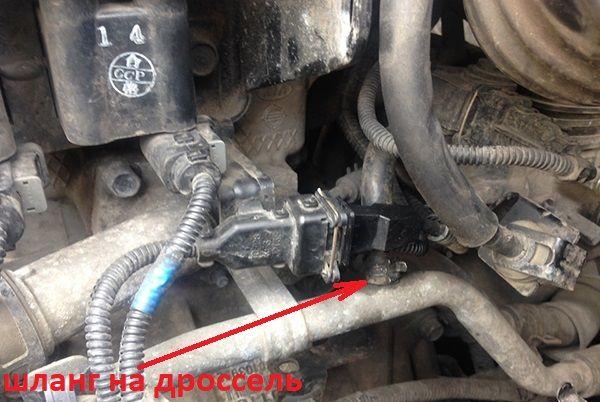| Draining the coolant |
| 1. Remove the expansion tank cap. |
| 2. Remove the fender liner under the engine compartment and place a container under the radiator on the left side. |
| 3. Loosen the clamp and remove the hose from the radiator base and drain the coolant into a container. |
| 4. After draining the coolant, install the hose on the radiator and secure it with a clamp. |
| Flushing the cooling system |
| 5. It is necessary to periodically change the coolant and flush the cooling system, as rust and dirt form in the channels of the system. The radiator must be flushed regardless of the engine. |
| wash the radiator |
| 6. Disconnect the radiator hoses. |
| 7. Insert a hose into the inlet of the upper tank of the radiator, turn on the water and flush the radiator until clean water comes out of the lower tank of the radiator. |
| 8. If the radiator cannot be washed with clean water, use detergent. |
| Engine wash |
| 9. Remove the thermostat and disconnect hoses from a radiator. |
| 10. Install the thermostat and connect the cooling system hoses. |
| Filling the cooling system |
| 11. Before filling the cooling system, check the condition of all internal hoses. Note that the antifreeze mixture must be used throughout the year to prevent corrosion. |
| 12. Remove the expansion tank cap. |
| 13. On 1,6L SOCH engines, remove the coolant temperature sensor from the top of the thermostat housing. This is necessary to remove air from the cooling system. On other engines, air is automatically removed from the cooling system when the engine warms up. |
| 14. Slowly fill in the coolant until the level reaches the maximum mark on the expansion tank. On 1,6L SOCH engines, install the temperature sensor after clean, bubble-free coolant flows from the sensor hole. |
| 15. Install the cover on the wide tank. |
| 16. Start the engine and warm it up to operating temperature. |
| 17. Stop the engine and let it cool, then check the coolant level. |


